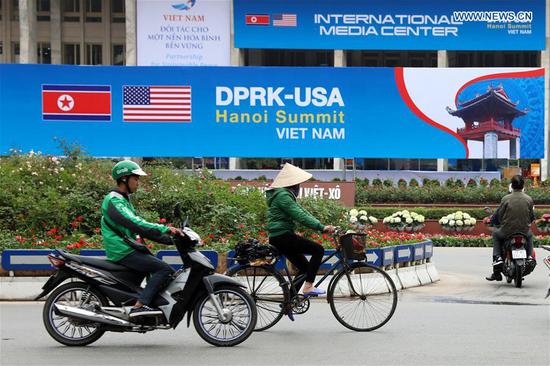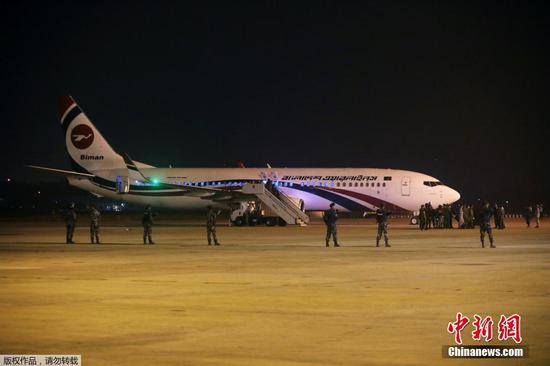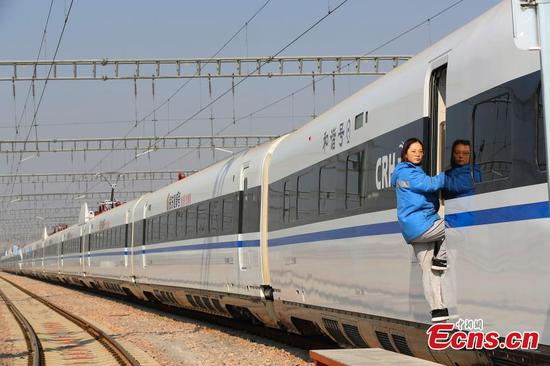The hype is building as a spate of new smartphones will be revealed at the upcoming Mobile World Congress (MWC) starting February 25. Conferences in recent years saw only incremental improvements to existing models, but this one promises to be explosive as industry giants are expected to unveil phones with foldable screens and 5G capabilities. Major brands such as Apple will be there, but the presence of multiple Chinese phone makers sporting competitive features reveal the global aspirations of the country's tech companies.
The public was able to get a tantalizing glimpse ahead of the MWC, through Samsung unveiling its foldable and 5G-capable smartphones almost a week before and the online leak of Huawei's new model sporting similar features. At the event, other Chinese brands such as Xiaomi and Oppo are also expected to showcase new models with the capability. The only major player to not get on the bandwagon so far seems to be Apple. But as the buzzword catches fire, smartphones that have 5G will need more than just commercial excitement to jumpstart the transition to a faster digital world.
This article will not speculate on what models which brands will reveal at the MWC 2019, scheduled to run until the 28th in Barcelona, Spain. Others are already doing that. But with 5G on the lips and minds of industry watchers, one question stands out: Is the world ready for it?
But I like my 4G...
You can already stream your Netflix show on the go with barely any lag, so why would you want even faster data and lower latency (think delay)? Must we be stuck in a cycle of speed as a virtue? What is 5G, anyway?
The term refers to a standard for wireless mobile data transmission. A network is deemed to be 5G if it reaches the specified speed and latency standards, among other requirements. Compared with 4G, 5G could be 10-20 times faster, allowing not just smoother high-res streaming of your YouTube cat videos, but opens the door to a bunch of new applications.
Think of self-driving vehicles communicating with each other to optimize traffic flow, doctors conducting remote surgery in rural areas with no wired access to the Internet, and the tech fanatic using smart glasses reliably to navigate the physical world.
User experience aside, 5G could change the notion of equal access to the Internet. While 4G essentially allowed anybody to tap into similar speeds given the constraints of the local infrastructure, the new standard allows network providers to offer different speeds in a locality through "network slicing." This means that a carrier or provider could offer packages at different prices in an area, with users or enterprises having to pay more on the same network to access faster speeds and other superior features.
China's 5G dream
While developed countries all have 5G on their schedules, China is going all in. China Mobile, the country's largest mobile operator, set up a site in 2017 using a 10-kilometer stretch of road in Beijing's Fangshan District, outfitting the area with 5G cell towers and sensors to test wireless communications between self-driving cars and their surroundings. The telecom giant also conducted similar tests in other major cities, like Shanghai and Guangzhou.
The timeline for widespread 5G adoption may vary according to each country, but China has the incentive to make the transition. This was seen with 4G in the country, leaping from eight percent penetration of 1.29 billion mobile connections in 2014 to 70 percent of 1.39 billion such connections in 2017. This rate of adoption, calculated by the global trade body for mobile operators GSMA, provides a glimpse of the expansive market in the country.
Such numbers are also encouraging for those deliberating on investing in new infrastructure to support 5G. The U.S. and Japan could be slower to adopt the standard because they have to upgrade or replace their extensive 4G cell sites, along with competing alternatives such as wired Internet access at comparable speeds.
Meanwhile, China has government support through subsidies and the regulatory will for a quicker, more widespread rollout. It also has numerous rural regions with little or no wired access to the Internet, so new 5G infrastructure would play a vital role in delivering speed along with convenience to those populations.
All of these figures would be hot air, however, without consumer applications and widespread adoption of phones with 5G in the near future. So regardless of whether the new smartphone models this year have the capability or not, the infrastructure and ecosystem will determine how quickly we enter this new digital era.


















































